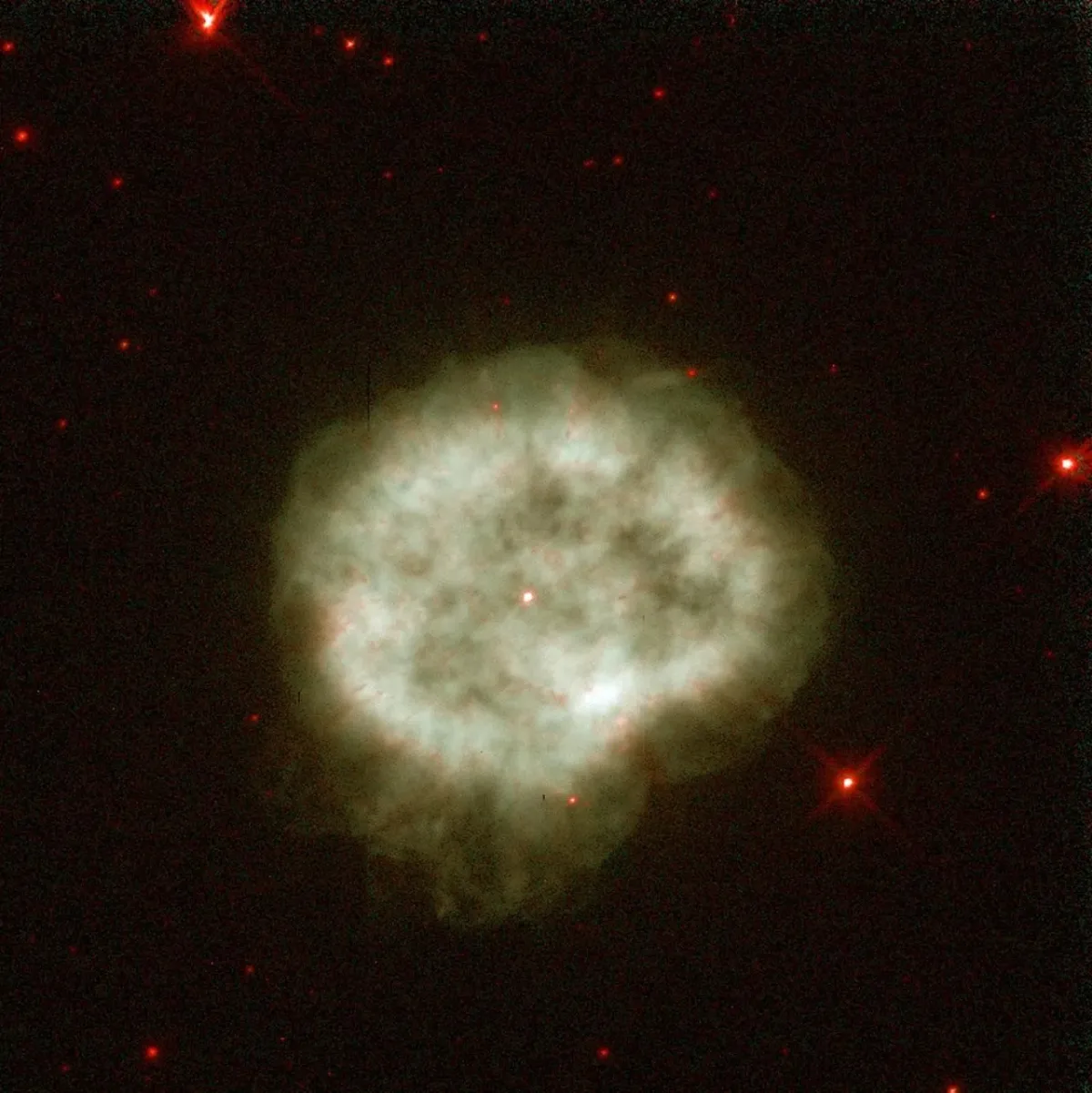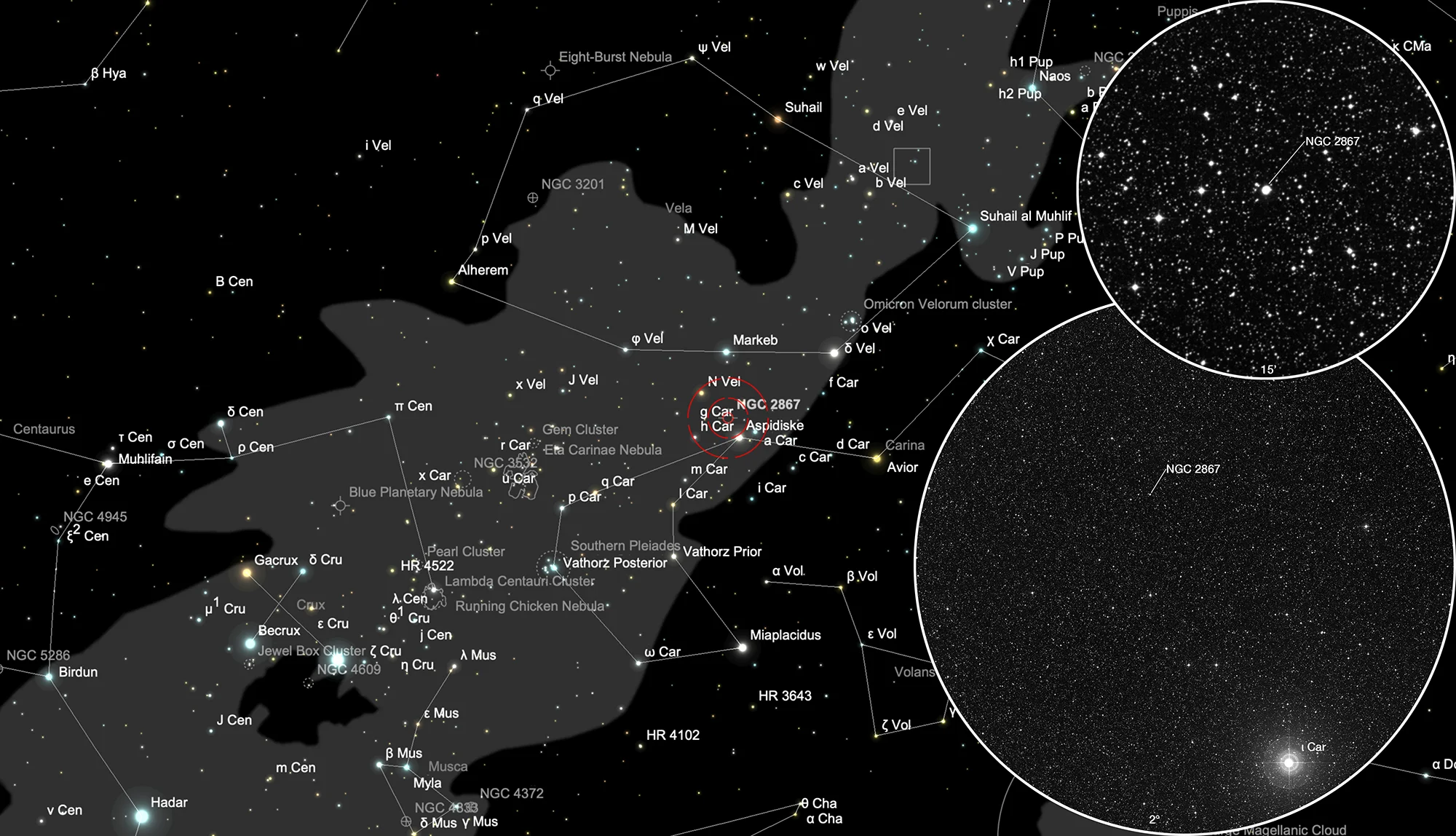Planetary Nebula NGC 2867

History
This planetary nebula was discovered by John Herschel on 1 April 1834 during his observations from South Africa. He listed it as h 3163 and observed it eight times. For the first observation he wrote: «The finest planetary nebula I ever remember to have seen for sharpness of termination; 3" diameter; exactly round; no more haziness about them than would be about a star of the same magnitude to-night (which is a favourable one) Light, a pale white = star 9th mag. Position of companion star = 59.8; 57.7; 58.4; men 58.6°; star = 15 mag. A very remarkable object. Showed to Stone, who distinctly perceived the total difference of appearance between it and a star 9th mag very near it. A second companion star suspected (at about half the distance of the 1st by diagram, and at an estimated position of 330° ±) among multitude of large and small stars.»
On the following night he observed it again together with Mr. Maclear and wrote: «Quite round, well defined, and about 3" or perhaps 4" diameter. Much better seen (between clouds) than last night (sweep 435). The smal star is still 1.5 diameter from edge. It has therefore not moved perceptibly, and is therefore not a planet.» [11]
Physical Properties
| Designation | NGC 2867 |
| Type | PN |
| Right Ascension (J2000.0) | 09h 21m 25.4s |
| Declination (J2000.0) | -58° 18' 40" |
| Diameter | 0.4 arcmin |
| Photographic (blue) magnitude | 9.7 mag |
| Visual magnitude | 9.7 mag |
| Metric Distance | 1.902 kpc |
| Dreyer Description | !! planetary = * 8, vS, R, * 15, 59° 13" |
| Identification, Remarks | h 3163; GC 1843; PK 278-5.1; ESO 126-PN8; CS=13.6 |
Finder Chart
The planetary nebula NGC 2867 is located in the constellation Carina. Unfortunately it is not visible from Europe. On 7 February it in opposition with the Sun and is therefore highest in the sky at local midnight.
